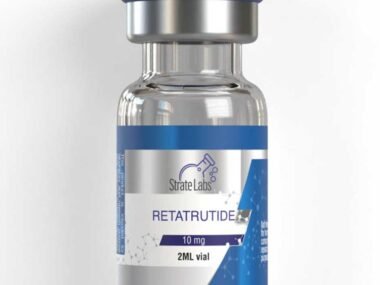Shilajit has been used in traditional systems like Ayurveda for centuries. But only in recent years has it found its way into Western supplement routines—often surrounded by bold claims and confusion. As the interest in functional herbs and adaptogens grows, more people are asking: Is shilajit actually worth adding to your stack?
This article breaks it down clearly. You’ll learn what shilajit is, how it’s commonly used, where quality matters most, and what to realistically expect—without falling into hype or misinformation.
What Exactly Is Shilajit?
Shilajit is a mineral-rich resin with a long history of use across Himalayan regions—and one of the most talked-about adaptogens in modern wellness. When people search for shilajit benefits, they’re often looking for support with energy, recovery, or overall vitality.
This tar-like substance forms over centuries from decomposed plant matter, and it’s packed with fulvic acid, trace minerals, and bioactive compounds.
In traditional systems, shilajit was prized for longevity and resilience. Today, it’s used in microdoses to support everything from stamina to nutrient absorption and metabolic balance. But let’s go beyond tradition and look at the facts.
How It’s Typically Used in Modern Wellness Routines
Shilajit is rarely a standalone solution. Most people who take it are using it as part of a daily stack. Here’s how it’s usually paired:
- With morning supplements for energy and nutrient absorption
- With nootropics to support mental clarity or focus
- With adaptogens like ashwagandha or rhodiola in performance blends
- With trace mineral regimens to support overall balance
Because it contains fulvic acid, shilajit is thought to help the body better absorb other nutrients. That’s one reason it often shows up as a base ingredient in complex formulations.
What the Research Actually Says
There is a growing body of research on shilajit, but it’s still a relatively early stage—most studies are small, and many use concentrated or standardized extracts.
Here’s what is better understood so far:
- Fulvic acid(one of the primary components) may support nutrient transport across cell membranes.
- Trace mineralslike zinc, iron, and magnesium contribute to various metabolic functions.
- Mitochondrial supporthas been observed in animal and in vitro studies, suggesting potential in cellular energy production.
In human trials, small doses of purified shilajit have been potentially linked to improved testosterone levels and physical performance in otherwise healthy men. But here’s the catch: These benefits depend heavily on purity, dosage, and extraction method. And many over-the-counter versions are underdosed, contaminated, or unstandardized.
Common Misconceptions About Shilajit
Like many herbal substances, shilajit is surrounded by misunderstandings—especially in online wellness spaces.
- Misconception 1: More Is Better.Shilajit is not a mega-dose supplement. Traditional use always involved small, pea-sized amounts. Excessive dosing doesn’t increase its effects and may upset mineral balance.
- Misconception 2: All Forms Are Equal.There’s a big difference between raw resin, purified extracts, and shilajit powder capsules. Some products use substandard sourcing or rely on synthetic fillers.
- Misconception 3: It Works Immediately.Shilajit isn’t meant to produce a stimulant-like “kick.” Effects, if any, are often gradual and cumulative over time—especially when used in synergy with other elements in your routine.
How to Choose a Quality Shilajit Product
If you’re thinking about adding shilajit to your daily stack, quality sourcing is critical. Poorly processed shilajit can contain heavy metals or be too diluted to be useful.
Here’s what to look for:
- Purified resin form(preferred over powders and tablets)
- Third-party testing for heavy metalsand microbiological contamination
- Sourcing transparency(Himalayan, Altai, or similar high-altitude region)
- Standardizationfor fulvic acid content (typically 15–20% for effective products)
Many reputable companies now publish Certificates of Analysis (COAs) on their websites. If a brand doesn’t disclose lab results, that’s a red flag.
Who Might Benefit from Adding Shilajit?
Shilajit may be worth considering if:
- You’re already taking a structured supplement stack and want to enhance nutrient delivery
- You’re focused on long-term energy balance or mineral replenishment
- You follow high-output routines (physical or cognitive) and want to build deeper resilience
- You’re looking for a plant-based compound to round out your adaptogen profile
It’s not a magic bullet—but for people who already have a clean diet, solid hydration, and a consistent routine, it might offer subtle but meaningful support over time.
How to Add It to Your Routine (Without Overdoing It)
If you’re ready to try shilajit, start small. Most users take 250–500 mg per day, ideally in the morning on an empty stomach.
Practical ways to add it:
- Dissolve a pea-sized amount of resin in warm water or tea
- Stir it into a smoothie with other base adaptogens
- Mix with honey, ghee, or milk if following traditional Ayurvedic methods
Avoid mixing it with high-acid liquids like citrus juice, as this may interfere with its natural pH profile and absorption potential.
Final Word: Is Shilajit Worth It?
Shilajit isn’t for everyone—but for experienced supplement users or those building a long-term herbal strategy, it may play a valuable supporting role. Think of it less as a primary agent and more as a cofactor enhancer—something that supports your stack from behind the scenes.
As with any herbal addition, consistency, source quality, and dosing discipline matter more than claims or marketing promises. If you approach shilajit with realistic expectations and a clean base routine, it just might help elevate your broader wellness stack.










